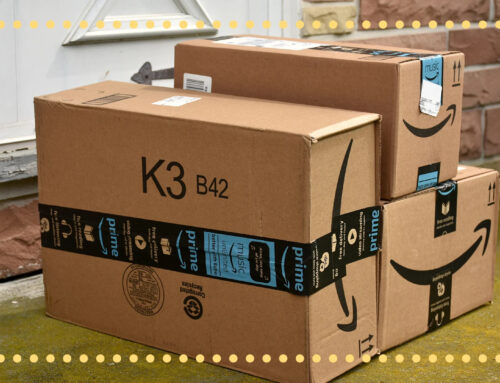Ethereum’s Next Leap: The Fusaka Update and What It Means for You
November 7, 2025
The Ethereum network is once again preparing for a consequential upgrade dubbed Fusaka, slated for mainnet activation in late 2025. This upgrade builds on prior efforts (such as Pectra) and aims to improve scalability, reduce costs, and strengthen the network’s foundations for the next decade of decentralized applications.
Why Fusaka Matters
At its core, Fusaka is not simply a “tune-up” but a strategic move to transition Ethereum from ambitious infrastructure toward mainstream usability. Key outcomes include:
- Improved data-availability and layer-2 throughput. The upgrade introduces PeerDAS (Peer-to-peer Data Availability Sampling), which allows nodes to store only portions of data rather than all, thereby reducing the burden on infrastructure and enabling layer-2 roll-ups to scale more efficiently.
- Gas-limit and execution enhancements. Among the changes are increases in block gas limits and refined blob / data-handling mechanisms so that layer-2 solutions can post more blobs per block, translating into lower costs and faster processing for users.
- Strong emphasis on security and compatibility. The upgrade also includes native support for the cryptographic P-256 curve (via EIP-7951) and other optimisations designed to bring Web2-style standards closer to Ethereum’s core.
What’s Changing — Technical Highlights
To break it down further, here are some of the specific changes worth noting:
- EIP-7251: Raises the maximum staking limit per validator from 32 ETH to 2,048 ETH. This gives large stakeholders more flexibility while simplifying validator operations.
- EIP-7702: Empowers regular externally-owned accounts (EOAs) to behave more like smart contracts, unlocking wallet functionality beyond simple transfers.
- Blob data increases: With “blobs” forming a critical part of the roll-up strategy, Fusaka doubles (or more) the capacity for blob inclusion per block, benefiting layer-2 transaction flow.
What Users, Investors & Developers Should Know
For everyday users
You may not notice anything dramatic immediately — your wallet still works, your favourite DApp still functions. But you can expect:
- Lower average transaction (gas) fees over time, especially when interacting with layer-2 roll-ups.
- Improved wallet usability (thanks to smart-account features) which may lead to simpler on-ramp experiences.
- Enhanced network stability and fewer bottlenecks, as more data moves off the base layer in smarter ways.
For developers and layer-2 builders
This upgrade enables you to:
- Deploy more ambitious applications with higher throughput assumptions, owing to greater blob/data capacity.
- Take advantage of new cryptographic standards and account-model enhancements (smart accounts) to build richer user-experiences.
- Rely on improved infrastructure for validators and node-operators, reducing cost and complexity of running nodes at scale.
For investors
The implications for the ether (ETH) token and the broader ecosystem include:
- A more efficient network may attract more usage (from DeFi, NFTs, tokenisation, etc.), potentially increasing demand for ETH.
- As layer-2 networks become more efficient, the value-proposition of the Ethereum base layer strengthens — this means ETH’s role as “digital oil” may solidify.
- That said, upgrades often come with short-term uncertainty. Network-rush, client updates, and coordination risk could create temporary volatility.
What to Watch & Risks
- Client-readiness: Every Ethereum upgrade requires node software (clients) to be updated. Delays or bugs can derail the rollout. The devs are working through these as of mid-2025.
- Layer-2 adoption: The success of Fusaka hinges on how effectively layer-2s can leverage the improvements. If roll-ups don’t take off, the base-layer gains may be under-utilised.
- Market sentiment vs fundamentals: While upgrades are positive, price behaviour often lags real-world usage or diverges due to macro factors. Investors should remain cautious.
- Security implications: New features mean new attack surfaces. Smart accounts, increased validator limits, and expanded data models must be carefully secured.
The Broader Picture: What’s Next
Fusaka is part of a longer roadmap for Ethereum. Post-2025 the network is eyeing even more aggressive scaling (sharding, stateless clients, further throughput gains) so as to support 100,000+ transactions per second and vast global adoption. In other words: this upgrade is foundational for what comes next, not the finish-line.
Conclusion
The Fusaka upgrade represents a meaningful step forward for Ethereum — not simply in terms of technology, but in practical terms of usability, cost and scalability. For users it means smoother, cheaper interactions; for developers it opens richer possibilities; and for investors it reinforces Ethereum’s position as critical infrastructure in the blockchain world. As always, the key will be in the execution. Watch the rollout carefully. Upgrade your clients or wallets if you’re in the technical stack. And observe how layer-2 networks respond. The real benefits will begin to materialise as the ecosystem adapts and scales.
Search
RECENT PRESS RELEASES
Related Post




